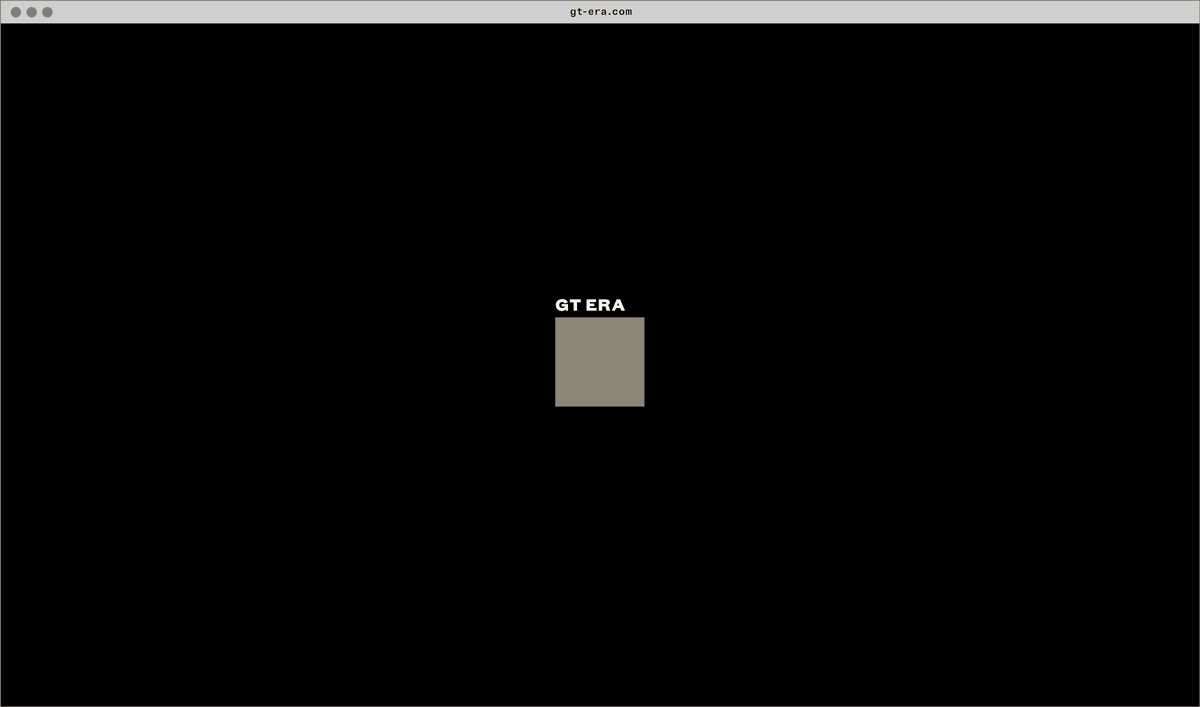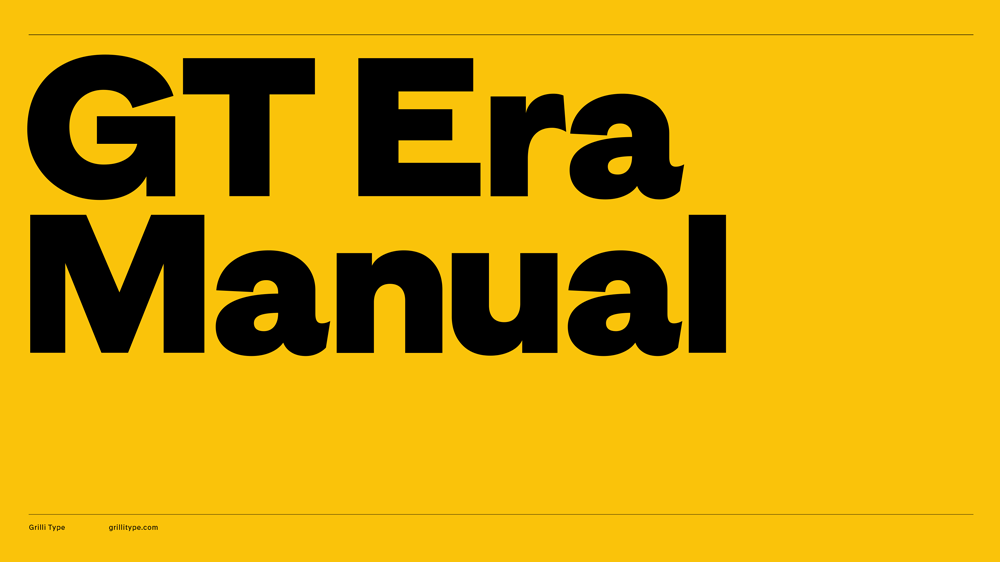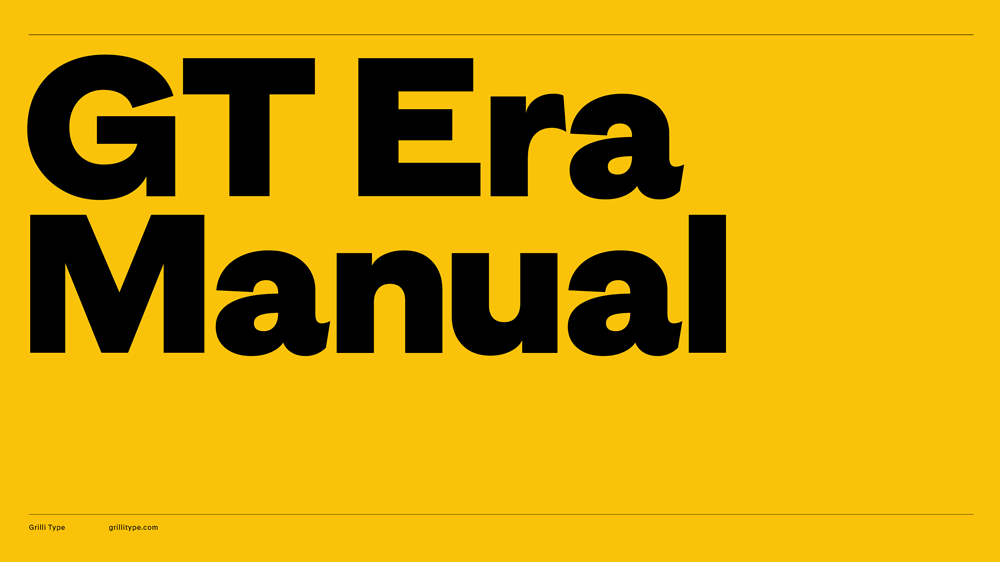GT Era
Family overview
- Display
- Thin Oblique
- Light Oblique
- Regular Oblique
- Medium Oblique
- Bold Oblique
- Heavy Oblique
- Black Oblique
- Text
- Thin Oblique
- Light Oblique
- Regular Oblique
- Medium Oblique
- Bold Oblique
- Heavy Oblique
- Black Oblique
Subfamilies
- Display ThinEach of the various people looking at the cow sees her in a way which is related to his occupation and his talents. The butcher sees the cow primarily as so many pounds of meat, so many pounds of fat, and so many pounds of bones.
- Display Thin ObliqueThe repetition of standardized parts, and the use of identical materials in different buildings, will have the same sort of coordinating and sobering effect on the aspect of our towns as uniformity of type in modern attire has in social life.
- Display LightERNST MAY, Mitarbeiter KAUFMANN, Frankfurt am Main, Siedlung Praunheim bei Frankfurt am Main (1926)
- Display Light ObliqueIn 1966, Breuer completed the Whitney Museum of American Art at 945 Madison Avenue on Manhattan’s Upper East Side.
- Display RegularThe phenomena of nature or of pictorial form become transposed to a new plane where the relationships of the elements begin to break away from objectivity and establish a new kind of order.
- Display Regular ObliqueThroughout his career, he became proficient and innovative in the fields of photography, typography, sculpture, painting, printmaking, film-making, and industrial design.
- Display MediumBut the primary advantage of the flat roof is that it renders possible a much freer kind of interior planning.
- Display Medium ObliqueThe phenomena of nature or of pictorial form become transposed to a new plane where the relationships of the elements begin to break away from objectivity and establish a new kind of order.
- Display BoldWe should accept nothing as predetermined, as constituted for eternity. Every firmly established, familiar thing can be shifted about and brought under a new and, primarily, unfamiliar order.
- Display Bold ObliqueLine Diagram 25: Linear structure of the picture “Little Dream in Red” (1925) by Kandinsky, Wassily.
- Display HeavyThe ethical necessity of the New Architecture can no longer be called in doubt. And the proof of this—if proof were still needed—is that in all countries Youth has been fired with its inspiration.
- Display Heavy ObliqueOne should not imagine that these relationships are to be taken literally, and, above all, should not believe that they can determine the compositional idea.
- Display BlackWe should accept nothing as predetermined, as constituted for eternity. Every firmly established, familiar thing can be shifted about and brought under a new and, primarily, unfamiliar order.
- Display Black ObliqueThe creative human being knows (and suffers from it) that the inherent values of life are being destroyed under the pressure of moneymaking, competition, and trade.
- Settings
Typeface information
GT Era reimagines the warmth and idiosyncrasies of early grotesk typefaces for our own era. These pre-modernist tools were being pushed to their extremes in the radical designs of the modernist movements—like Bauhaus and De Stijl—of the period. The typeface shuns neutrality and embraces friction, championing recognition over uniformity and flavor over conformity.
Typeface features
OpenType features enable smart typography. You can use these features in most Desktop applications, on the web, and in your mobile apps. Each typeface contains different features. Below are the most important features included in GT Era’s fonts:
- SS01
- Alternate g
Painting
Typeface Minisite


- Visit the GT Era minisite to discover more about the typeface family’s history and design concept.

